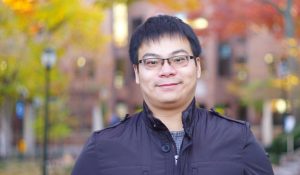 Q&A with Sijia Yang, assistant professor in the School of Journalism and Mass Communication
Q&A with Sijia Yang, assistant professor in the School of Journalism and Mass Communication
Hometown: Tongxiang, China
Educational background: Ph.D. in communication, Annenberg School for Communication, University of Pennsylvania
How did you get into your field of research?
I have always been fascinated by both the human creativity of producing all kinds of messages, ranging from meticulously crafted advertisements to everyday casual use of cute emojis, and also the ways messages might either subtly nudge or explicitly attempt to persuade us to do all kinds of things. Today’s ever-changing communication technologies such as VR, chatbot, interactive games and algorithms continue to push and redefine the boundaries of the modality, content, delivery and ecology of modern persuasive messaging. I am particularly interested in understanding what would make persuasive messaging work in today’s digital media environment. Also, I would like to harness this growing body of knowledge to promote health especially in the areas of tobacco control and substance abuse. Both my dad and uncles are heavy smokers, and I have never stopped trying to get them to quit. My dad recently stopped smoking (hooray!) but there are still millions of smokers around the world dying from preventable diseases every year. And now we have the new problem of vaping among youths. The fight perhaps will never be over.
What attracted you to UW-Madison?
I was actually admitted to the Ph.D. program in the School of Journalism and Mass Communication several years ago. I was impressed by the faculty’s quality of work, the students’ genuine interest in pursuing knowledge and the school’s collaborative culture even back then. Also, who would not fall for Lake Mendota and the Babcock ice cream? A wise man told me that if I was serious about staying in Madison for a longer time, then I should get my Ph.D. somewhere else and try to come back as a faculty member. So here I am!
What was your first visit to campus like?
It was back in March 2012, so I was lucky to be greeted by the spring, not the winter, campus. The gorgeous lake view has remained in my memory. My current colleagues were extremely approachable and nice to me back then as a prospective student.
What’s one thing you hope students who take a class with you will come away with?
Persuasive messaging is an art but also a science and could be studied with the most cutting-edge computational methods. Cracking the code of effective messaging could be used for good or for bad. I hope my students will become informed message recipients and responsible message producers in the modern communication environment.
How do you feel your work relates to the Wisconsin Idea?
The applied aspect of my work is health promotion especially among vulnerable populations. One of my current research projects aims to examine effective features within visual tobacco control messages that would prevent adolescents from initiating tobacco product use such as vaping. Another project will attempt to identify messages that could be delivered through mobile health systems to prevent relapse among local residents suffering from opioid use disorders. I hope my research will benefit real people in tangible ways.
What’s something interesting about your area of expertise you can share that will make us sound smarter at parties?
I am curious about what visual elements would make a health campaign message both effective and likely to go viral. In the domain of tobacco control, I found that commonly used graphics and disgusting visual images (e.g., diseased teeth and gums) were persuasive but not necessarily share-worthy on social media. For campaign designers who want their messages to be both persuasive and share-worthy, a better strategy is to use visual images portraying secondhand harm to kids and pets. So, kids and pets are the way to go!
What are your other hobbies and interests?
Amateur karaoke singing for fun!